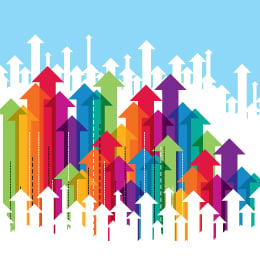 When we discuss economic growth, there’s a tendency to look at the top level of data—the growth figure itself—and try to figure things out from there. Recently, I’ve compared current growth levels with those of past decades (here and here) but haven’t discussed why things might have been different.
When we discuss economic growth, there’s a tendency to look at the top level of data—the growth figure itself—and try to figure things out from there. Recently, I’ve compared current growth levels with those of past decades (here and here) but haven’t discussed why things might have been different.
Today, as a way to understand those differences, let’s think about where growth comes from, on a fundamental level.
Defining economic growth
My own definition, which draws from several others, is a greater delivery of goods and services measured on a constant purchasing power basis. In other words, economic growth means that we’re producing more—more goods, more services, more everything. (How, exactly, we measure this, which is where the constant purchasing power basis comes in, is an interesting but separate question.)
Producing more: 3 key determinants
Unlike quite a bit of economics, the question of how we can produce more resolves easily to the individual level. You can produce more by working more or working more efficiently.
The working-age population. At the level of the whole economy, working more translates to more jobs and more hours per week per job. Assuming a healthy economy, though, at full employment, jobs and hours are not the constraint; the number of available workers is.
If a population is shrinking, particularly in the core working age groups, growth will decline, other things being equal. A fast-growing population, on the other hand, provides a tailwind to growth. People make more, work more, and buy more.
Business investment. Working more efficiently has two components: having the tools to work with (whether that’s machine tools or computers) and then figuring out how to do things better with the existing tools. Having the tools can be approximated by business investment. After all, when a business buys a piece of equipment, it does so specifically in order to do more. Better tools mean a more efficient worker.
Productivity. Population and demographic changes, as well as business investment, can be measured and accounted for when we look at growth. The last piece—figuring out how to do things better—is much less visible.
Economists refer to this component as total factor productivity, or a catch-up factor for growth we can’t directly account for. Technology is usually assumed to be a big part of this. Indeed, in the past couple of decades, the rise of computers and the Internet seemed to correlate with higher productivity levels, and most of us have seen the advantages of technology in our own jobs.
When we compare growth in past decades with now, then, we have to consider changes in these three areas: the working-age population, business investment, and productivity. These are the factors that matter most, and they help explain both where we’ve been and where we may be going.


 Print
Print


